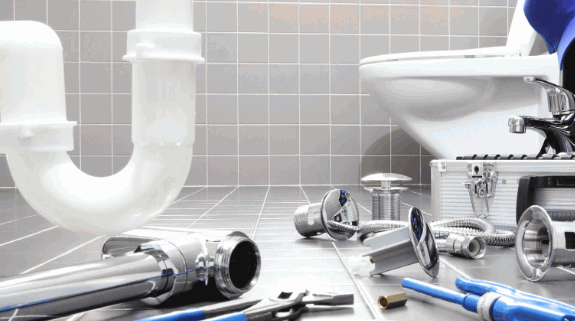Are you tired of dealing with slow-draining sinks and foul odors in your bathroom? Maintaining clean drain pipes is crucial to prevent clogs and keep your plumbing system running smoothly.
In this article, we will discuss the importance of cleaning drain pipes in the bathroom, the tools you will need, and a step-by-step guide on how to effectively clean them.
We will also cover how often you should clean drain pipes, preventative measures to keep them clean, and when it’s time to call a professional. Let’s get started!
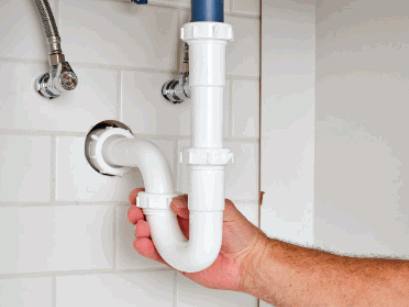
Why is it Important to Clean Drain Pipes in the Bathroom?
Keeping your bathroom sink drain clean is crucial for the overall hygiene and functionality of your bathroom, as it helps prevent clogs, reduces the risk of unpleasant odors, and ensures that water drains efficiently, avoiding potential water damage to your pipes and fixtures.
Discover more: How To Clean Drain In Bathroom Sink
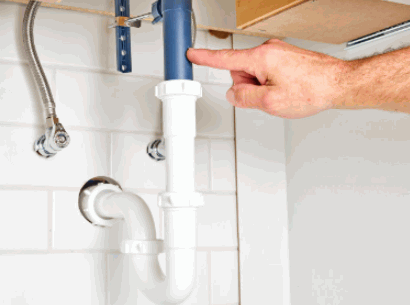
What Tools Will You Need to Clean Drain Pipes in the Bathroom?
To effectively clean the drain pipes in your bathroom, you will need a variety of tools and cleaning agents, ranging from household items like baking soda and vinegar to more specialized tools like a drain snake and commercial chemical cleaners.
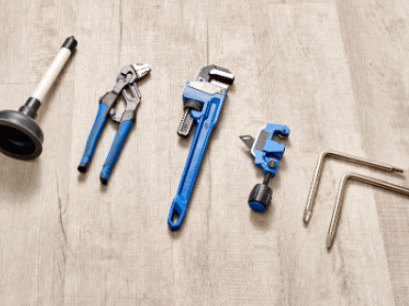
How to Clean Drain Pipes in the Bathroom?
Cleaning the drain pipes in your bathroom involves a series of steps that ensure thorough removal of debris, hair, and clogs, restoring the smooth flow of water, and maintaining the overall cleanliness of your bathroom sink.
Step 1: Remove Any Debris or Hair from the Drain Cover
The first step to cleaning your bathroom sink drain is to remove any visible debris or hair from the drain cover.
Removing the debris and hair from the drain cover is crucial not only for ensuring efficient water flow but also for preventing future clogs. Invest in a pair of protective gloves before you start, to shield your hands from any dirt or bacteria. A small brush can also come in handy to dislodge stubborn particles. By taking the time to thoroughly clean the drain cover, you set the stage for a smoother and more effective drain-cleaning process.
Step 2: Use a Plunger to Clear the Clog
After removing surface debris, the next step is to use a plunger to clear any clogs that may be deeper within the drain.
When using a plunger, it’s essential to choose the right type for the job. There are two main types of plungers: the cup plunger and the flange plunger. The cup plunger is typically used for sinks and tubs, while the flange plunger, also known as a toilet plunger, is designed specifically for toilets. To create a good seal around the drain, ensure there is enough water in the fixture to cover the rubber end of the plunger. This seal is crucial for generating the necessary suction to dislodge stubborn clogs. By plunging correctly, you can break up and remove the blockage, improving drainage and preventing further plumbing issues.
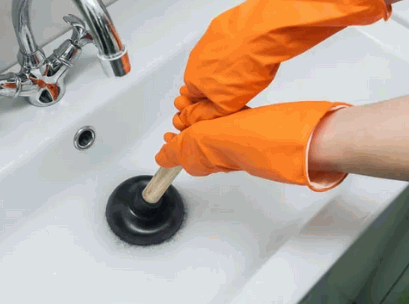
Step 3: Create a Natural Cleaning Solution
To create a natural cleaning solution, mix equal parts of baking soda and vinegar.
One of the benefits of using natural cleaning solutions like this is their ability to effectively break down dirt and grime without harsh chemicals. The reaction between baking soda and vinegar creates a powerful foaming action that can help lift stubborn stains and eliminate odors.
When mixing the solution, be sure to use a container that can handle the fizzing reaction that occurs. Stir gently to combine the ingredients, then apply the mixture directly to the surface you wish to clean.
If you prefer alternatives to vinegar, consider using lemon juice or essential oils for a pleasant scent and added cleaning power.
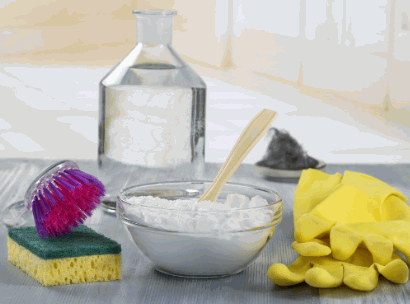
Step 4: Pour the Cleaning Solution into the Drain
Carefully pour the prepared cleaning solution directly into the bathroom sink drain.
It is crucial to pour the solution slowly and evenly, ensuring it reaches all parts of the drain pipe. This allows the solution to effectively penetrate and break down any clogs or build-up within the pipes.
When handling the cleaning solution, be cautious of splashes or spills that may occur, as some solutions contain strong chemicals that can be harmful to the skin and eyes. It is advisable to wear protective gloves and safety goggles as a precaution.
The cleaning solution typically works by utilizing powerful enzymes or chemicals that dissolve organic matter, hair, soap scum, and other debris that often lead to clogs in drain pipes. This breakdown process helps to clear blockages and leave the pipes clean and free-flowing.
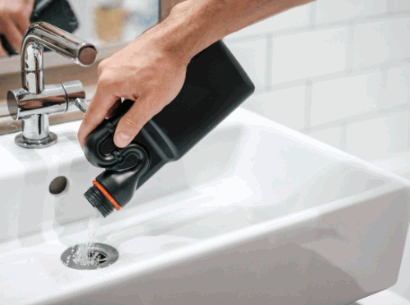
Step 5: Let the Solution Sit for 30 Minutes
Allow the cleaning solution to sit in the drain for at least 30 minutes to break down any clogs and clean the pipes thoroughly.
During this waiting period, the solution works its magic by penetrating deep into the clogs, loosening gunk and grime buildup that may be causing the blockage. This allows for a more effective cleaning process, ensuring that your drain is thoroughly cleared. For optimal results, consider covering the drain opening with a plastic wrap or plug to prevent the solution from evaporating too quickly. By keeping the solution contained within the pipes, it can work more efficiently to break down stubborn blockages.
Step 6: Use a Drain Snake to Remove Any Remaining Debris
After the cleaning solution has sat for 30 minutes, use a drain snake to remove any remaining debris or clogs.
When using a drain snake, make sure to insert the tip gently into the drain opening. Slowly push the snake down the pipe, turning the handle clockwise as you go to help it maneuver through the bends and traps in the plumbing system. Drain snakes are particularly effective in reaching those deep, stubborn clogs that traditional methods may not be able to dislodge. By rotating and pushing the snake further into the drain, you can easily hook onto the debris or hair causing the blockage.
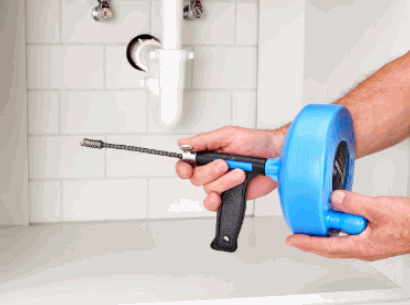
Step 7: Flush the Drain with Hot Water
Flush the drain with hot water or boiling water to clear out any remaining residue and ensure the pipes are fully clean.
Using hot or boiling water to flush the drain offers several benefits. The high temperature of the water helps to loosen and wash away any stubborn buildup that may have accumulated in the pipes over time. This method is not only effective in clearing out debris but also helps in disinfecting the drain by killing off any harmful bacteria present.
When handling boiling water, it is essential to take necessary safety precautions to avoid burns or accidents. Be sure to pour the water slowly and carefully down the drain to prevent splashing, and always wear protective gloves to shield your hands from the heat.
By incorporating this step into your regular cleaning routine, you can ensure that any last traces of debris are removed, allowing for smooth and unobstructed drainage in your household plumbing system.
How Often Should You Clean Drain Pipes in the Bathroom?
Regular maintenance of your bathroom sink drain is essential to prevent clogs and ensure efficient drainage, with cleaning recommended at least once a month.
By keeping your bathroom sink drain clean, you can avoid the buildup of hair, soap scum, and other debris that can lead to blockages.
Preventive maintenance not only saves you from the hassle of dealing with severe clogs but also helps avoid the need for costly repairs down the line.
Integrating drain cleaning into your regular household cleaning routine can be simple; consider using a mixture of hot water and vinegar to flush the drain or invest in a drain snake for deeper cleaning.
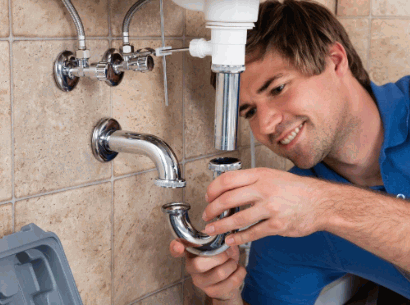
What Are Some Preventative Measures to Keep Drain Pipes in the Bathroom Clean?
Implementing preventative measures is key to keeping your bathroom drain pipes clean and free from clogs, thus avoiding common issues like slow drainage and unpleasant odors.
Use a Drain Cover
Using a drain cover is an effective way to prevent hair and other debris from entering and clogging your bathroom sink drain.
Drain covers play a vital role in ensuring that only water passes through the drain, reducing the chances of blockages and plumbing issues. There are various types of drain covers available, including mesh, dome, and snap-in styles.
Mesh drain covers are ideal for trapping smaller particles like hair, while dome-shaped covers provide a more aesthetic appeal. Snap-in covers are easy to install and remove for regular cleaning.
When selecting a drain cover, consider the size of your drain opening and the type of debris commonly found in your sink. Regular maintenance, such as cleaning the cover and removing any buildup, is essential to maximize its effectiveness and prolong its lifespan.
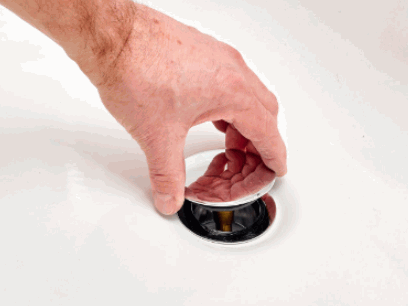
Avoid Pouring Grease or Oil Down the Drain
To maintain clean drain pipes, avoid pouring grease or oil down the bathroom sink as they can solidify and cause stubborn clogs.
These substances may flow easily when warm, but as they cool, they harden, attaching to the walls of pipes and gradually building up over time. This buildup can restrict the flow of water and lead to blockages that are challenging to remove.
Instead of pouring grease or oil down the drain, consider collecting them in a separate container before disposing of them in the garbage. By adopting this simple practice, you can prevent costly plumbing issues and ensure the smooth functioning of your drainage system for years to come.
Regularly Flush the Drain with Hot Water
Regularly flushing your bathroom sink drain with hot water helps prevent the buildup of soap scum and other residues that can lead to clogs.
When you make this a regular practice, it not only helps in preventing blockages but also maintains the efficiency of your drain pipes. The heat from the hot water effectively dissolves grease and oils that can accumulate in the pipes, keeping them clear and flowing smoothly. Hot water flushing is a simple and cost-effective way to extend the lifespan of your plumbing system and avoid more serious issues down the line.
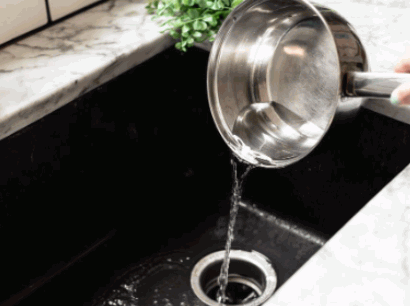
Use a Natural Cleaning Solution Monthly
Using a natural cleaning solution like vinegar and baking soda on a monthly basis can help keep your bathroom sink drain clean and free of blockages.
These natural ingredients not only effectively break down grime and soap scum but also help prevent foul odors from developing in the drain. By regularly using vinegar and baking soda in your cleaning routine, you can avoid the harsh chemicals found in many commercial drain cleaners.
Natural cleaning solutions are eco-friendly and pose fewer health risks. Vinegar, lemon juice, and baking soda are all versatile cleaners that can tackle various cleaning tasks throughout your home without harming the environment or your family’s health.
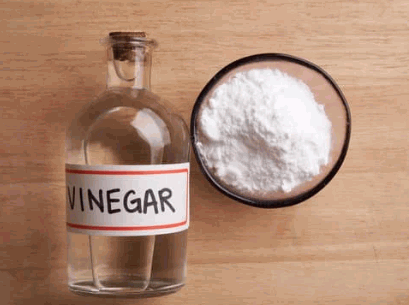
When Should You Call a Professional?
Knowing when to call a professional plumber is essential for handling severe clogs and other complex drain issues that cannot be resolved with household methods.
While minor clogs can often be cleared with DIY solutions like plungers or drain cleaners, there are certain signs indicating a more serious problem that necessitates expert assistance. For instance, if multiple drains in your home are clogged simultaneously, or if water is backing up in unexpected places like the bathtub when the toilet is flushed, it could signal a major blockage in the main line.
Professionals have the equipment and expertise to diagnose the root cause of these issues, whether it’s tree roots invading the pipes, a collapsed sewer line, or mineral buildup that requires hydrojetting to clear effectively. Attempting to tackle such complex problems without proper knowledge and tools can lead to further damage and costly repairs, making professional services a wise investment in maintaining the integrity of your plumbing system.

